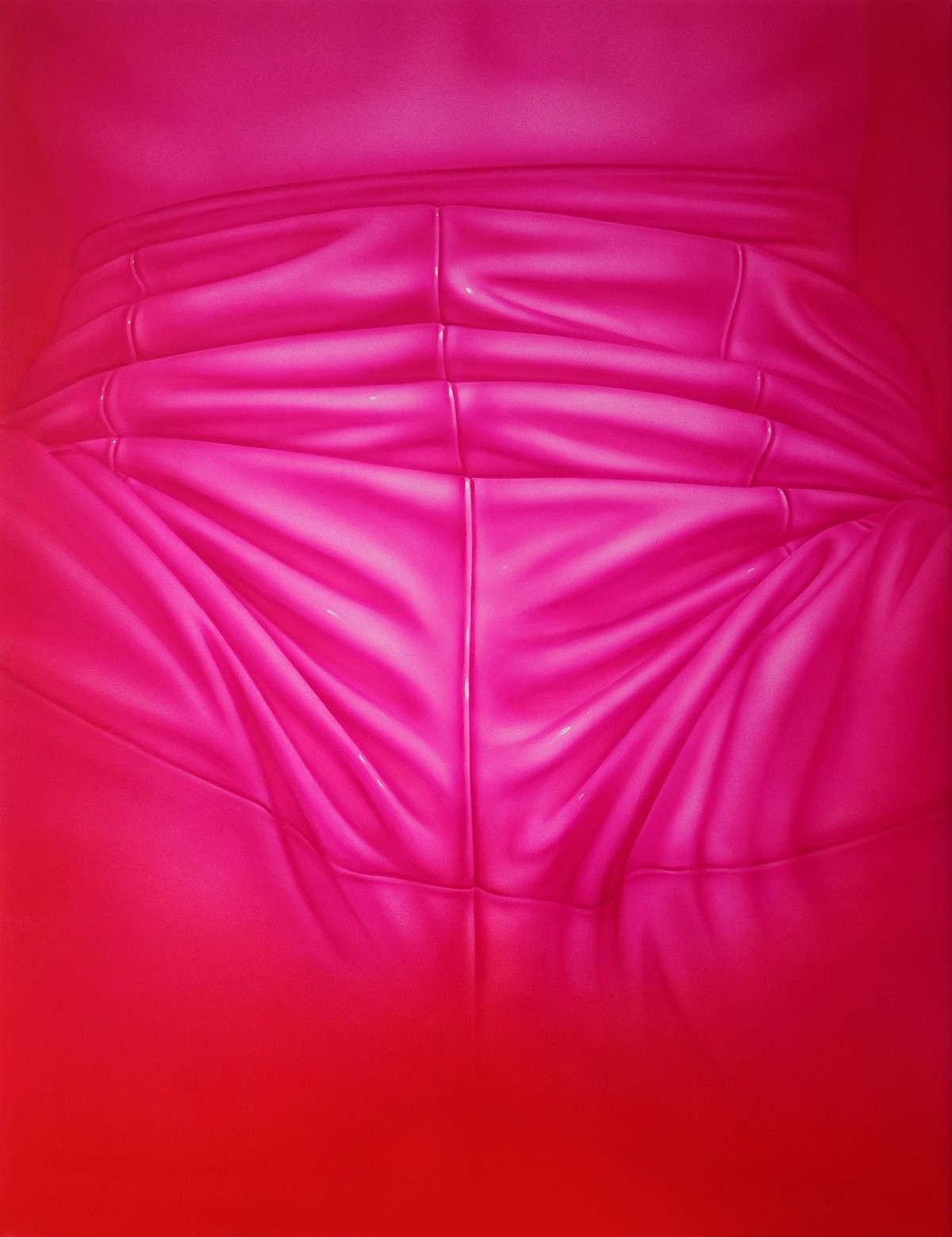Exploring existence and the existential, the Lithuanian painter's provocative work forms part of 'Beyond The Veil' at Guts Gallery.

Currently on display at Guts Gallery as part of group show Beyond the Veil, Aistė Stancikaitė’s painting “Of One’s Own III” depicts a close up of a gloved hand, clutching at a vest to reveal the subject’s upper body. The third act in a series that uses texture to conjure the sensual, the glove in particular – composed in a way to suggest leather – is a marker of the artist’s personal brand of storytelling. “From the start, I’ve been drawn to showing quite little in quite high detail. I like to suggest some sort of narrative, but not show the whole picture — where it's at, what's going on, who the person is,” she explains over a Zoom call from Berlin. “I like this contrast of something extremely figurative and detailed, and at the same time extremely abstract. Not showing gender, for example, in a pronounced way. And gloves leave this mystery and create an opportunity for the viewer to create their own story.”
Scroll through the Lithuanian artist’s Instagram page and further iterations of the motif vie for attention, each piece rendered in an intense shade of hot pink that recalls the palette of Richard Mosse’s surreal conflict work made using Kodak Aerochrome. Scroll further, and the pink slips into red, announcing the inception of Aistė’s monochromatic practice. “I would still call it monochrome, the work now, it's still primarily based around red,” she says, with an acknowledgement of the blues and purples that have begun feeding the vibrancy of recent pieces. “It’s an intuitive thing. I was experimenting with different, un-lifelike colours because I wanted to create a different universe — I didn't want my drawing to be realism, but kind of hinting at reality. Red I connected to the most. It produced this strange heat; the intensity of the colour was very physical, and it didn't get boring because there was so much depth in it.”

A creative child who grew up in a straightforward environment, Aistė had initially entertained the idea of a career in journalism she says, but this all changed in her teens, after she accompanied a friend to an after-school art class, initially in a passive capacity simply to socialise. “Then it spiralled, because I was weirdly really good at it, the technical side of it, which gave me this complete turn in focus and I went on to study painting.” By the end of her degree she had become disillusioned, both with the art world and the idea of making art, and took a five-year break, focusing instead on photography and travel. “But at some point I started craving the act of drawing, just the physical act, and that's how it restarted,” she explains. “I found my visual language in drawing.”
The things that informed Aistė’s earlier work in pencil arrived from the world around her, she says, be it an object she found, interaction she had or something she read. Having come back to paint two years ago (predominantly using oil and acrylic), this approach continues to shape her work. “I missed painting,” she says, recalling her return to the medium, “and I was curious as to how I could translate what I did on paper onto a bigger scale, and the range of expressions that would open up. So it was a natural next step, to expand and experiment, but also to play with colour, size, composition. Drawing felt a bit restrictive.” The transition initiated the tighter crop and spurred a closer look at the intimacy that’s prevalent in many of her pieces. “It’s just showing a little glimpse into someone's universe. You might guess what's going on, but you'll never fully know whether what you're thinking is true,” she says.

“When I started working more as an artist [away from commercial work], I really started going into themes of existence and the existential, loneliness, desire, intimacy with self — not in a sexual way, but just being with yourself. That's what my work largely explores, this kind of longing and getting to know yourself, looking at yourself,” she continues, alluding to the quiet moments the works interrogate. The Guts show too, is rooted in ideas of the inner self, foregrounding hidden worlds and the concept of slowing down: naturally it resonated with the artist immediately. “I connected really strongly, it was almost like the exhibition text was written about my work,” she states. That shared perspective also extends to the way viewers have interacted with the work she finds, largely intrigued and ultimately affected by the use of red. “It’s not a colour that leaves anyone undecided – people either love it or hate it, but everyone has a physical response to it,” says Aistė. “The painting is very physical, its presence in the space is either taking you in or it's bothering you.”
Aistė Stancikaitė’s work is on show at Guts Gallery as part of ‘Beyond The Veil’ (open until 5 May).





Credits
All images courtesy of the artist.

